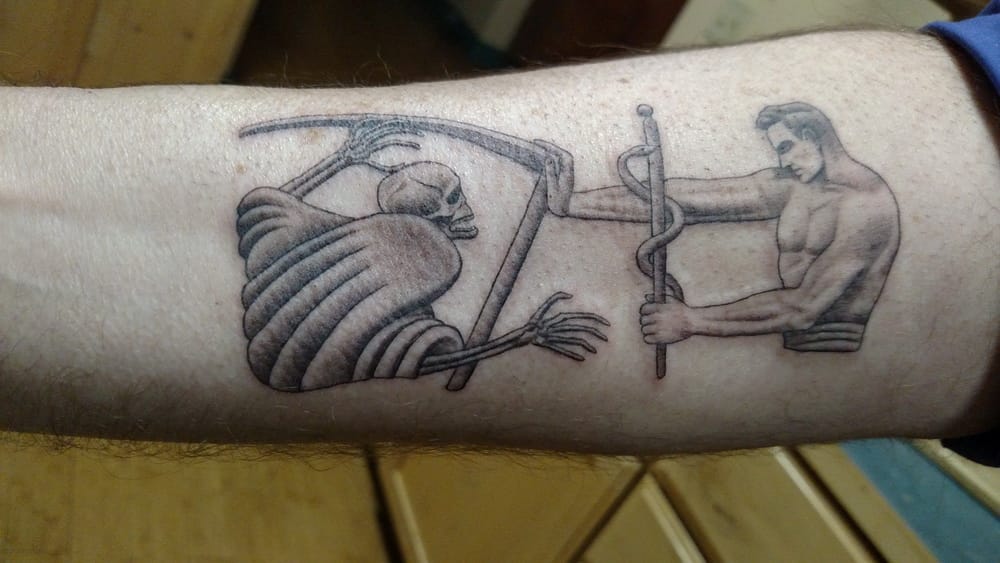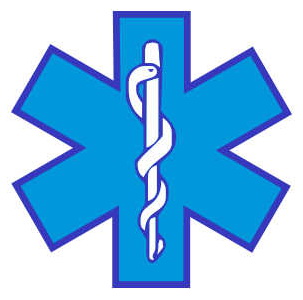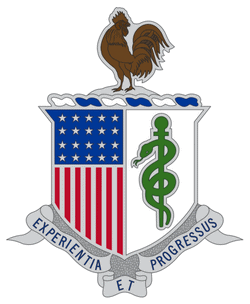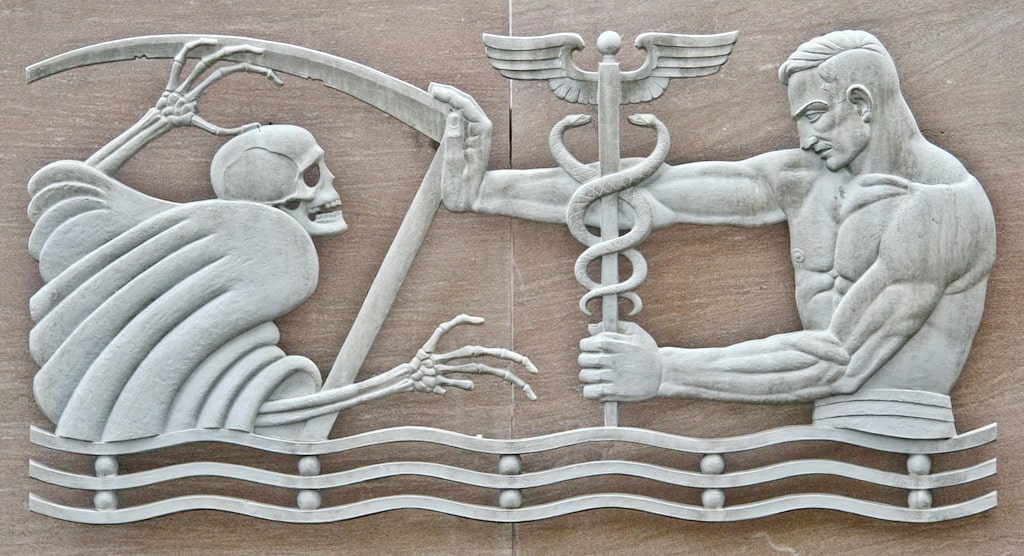I’m a marked man.
I commissioned some artwork that was inspired by several things: The really good EMS “save” we had a few years ago, where Kit and I thwarted death.
And more recently, the death of my friend James — a reminder that at some point, we always lose.
And, last, an amazing sculpture I’ve loved.
Pull it together, do some interpretation, and what you get is now permanently on my right forearm:

The Symbology Decoded
That’s Asclepius, the Greek god of healing. Note that he’s not holding a caduceus — a rod with wings with two snakes wound around it — to fend off Death. The caduceus is the symbol carried in the left hand of Mercury, the messenger of the gods — and guide of the dead and protector of merchants, shepherds, gamblers, liars, and thieves. It was mistakenly adopted as the symbol of medicine by the U.S. Army Medical Corps in 1902 at the insistence of a single officer.
 Rather, the Rod of Asclepius, with a single snake, is the correct symbol of medicine. It was wielded by the Greek god Asclepius, the deity associated with healing and medicine.
Rather, the Rod of Asclepius, with a single snake, is the correct symbol of medicine. It was wielded by the Greek god Asclepius, the deity associated with healing and medicine.
It’s most commonly recognized in modern times as part of the Star of Life, which you’ll see being worn by street medics, and plastered on rescue vehicles and ambulances.
“If it’s got wings on it, it’s not really the symbol of medicine,” says the communications director of the Minnesota Medical Association. “It’s something like using the logo for the National Rifle Association when referring to the Audubon Society.”
 So the next time you see a medical association or clinic with a caduceus as a symbol, know that they value “merchants, shepherds, gamblers, liars, and thieves” over your health — or at the very least, over accuracy.
So the next time you see a medical association or clinic with a caduceus as a symbol, know that they value “merchants, shepherds, gamblers, liars, and thieves” over your health — or at the very least, over accuracy.
The way medical care has evolved in the U.S., it kind of makes sense, eh?
Progress is Being Made
 Not all American medical groups use the wrong symbol. The American Medical Association itself has used the Rod of Asclepius for over a century, and its logo includes a stylized depiction, as shown here.
Not all American medical groups use the wrong symbol. The American Medical Association itself has used the Rod of Asclepius for over a century, and its logo includes a stylized depiction, as shown here.
 And even the military is starting to come around. This is the new (adopted October 2014) crest (or regimental insignia) of AMEDD — the Army Medical Department. Note the Rod of Asclepius in the shield.
And even the military is starting to come around. This is the new (adopted October 2014) crest (or regimental insignia) of AMEDD — the Army Medical Department. Note the Rod of Asclepius in the shield.
(Why the rooster? “The rooster is associated with the ancient Greek and Roman god of healing and medicine, Aesculapius,” Wikipedia notes. “The Ancient Greeks believed that the rooster’s crowing at dawn drove away the evil disease-spreading demons from the temples so that it could be a place of healing.”)
Symbols matter, and I’m glad to see the Army slowly moving in the right direction.
Last, what’s the sculpture I mentioned?

This is on the front of the Fulton County Department of Public Health and Wellness (Building 1) in Atlanta, Georgia, built in around 1950. The sculptor was Julian Hoke Harris (1906–1987), who taught at the College of Architecture at Georgia Tech, his alma mater. He was also known as a freelance sculptor who contributed to more than 50 public buildings in the southeast.
Meaningful Modifications
My instructions to the tattoo artist were: convert the caduceus to the Rod of Asclepius, and make the snake’s head come across the staff, as in the Star of Life; take the man’s features down a notch, including making his right hand look a bit more normal-sized; five full fingers on each hand of Death, please, but not so freakishly long; and lose the wavy base.
The shading details were left in his hands, and he did an amazing job. James would have loved it.
And the Left Side?
That came in 2016:

Of course it includes Pluto! I was on the JPL Pluto Preproject team, and was invited to witness the launch of the resulting spacecraft.
I am, however, less happy with this artist’s work. The dark outlines are a much older, out-of-style technique.
– – –
Bad link? Broken image? Other problem on this page? Use the Help button lower right, and thanks.
This page is an example of my style of “Thought-Provoking Entertainment”. This is True is an email newsletter that uses “weird news” as a vehicle to explore the human condition in an entertaining way. If that sounds good, click here to open a subscribe form.
To really support This is True, you’re invited to sign up for a subscription to the much-expanded “Premium” edition:
Q: Why would I want to pay more than the minimum rate?
A: To support the publication to help it thrive and stay online: this kind of support means less future need for price increases (and smaller increases when they do happen), which enables more people to upgrade. This option was requested by existing Premium subscribers.

“Ink” being such an important part of your life, and the idea of making something that sticks, it seems to me to be an absolutely perfect, and logical, step for you to have taken.
Nice.
—
Huh… the parallel of “ink” (slang for a tattoo) and “ink” (what a publisher uses) hadn’t actually occurred to me yet. But I like it! Thanks, Allen. -rc
I am not ordinarily a tattoo fan, at all. But here, and on you, I have to say: JOB WELL DONE!
I will make an exception for this one, because it is well deserved!
KUDOS!
Thanks Randy, for busting another myth. It’s good to know the origins of our commonly used symbols.
Any information on the artist or “in progress” pix?
—
It was a local (Montrose, Colo.) artist, and I don’t think any of the few pics I took “in progress” are worthy — pretty much washed out in his work light. -rc
Interesting bit of history, Randy. I’m retired from the Army Medical Corps, and did not know about the difference in the Rod of Asclepius and the caduceus.
I like the tat, it reflects what we all ascribe to, and to be; the defeaters of death. But we also have to acknowledge that death comes to us all, and it is not to be feared, nor is it to be defeated when it comes about naturally. At the end of a long and well lived life.
—
Exactly. -rc
I respect your insights however as a Navy Hospital Corpsman the caduceus is the symbol of a long line of medical personnel that have earned and proudly worn that symbol as a sign of readiness to respond to the call, “Corpsman Up”.
Please do not tarnish their efforts, sacrifices and works just because the symbol happens to also represent something else.
—
I simply talked about historical facts. That doesn’t lessen those who wore the symbols, or lessen the work that they did. -rc
Well, given that insurance companies (including medical insurance) got their start as gambling wagers, and are to this day the largest and richest legal casinos in the world, favoring gamblers isn’t TOO odd.
AWESOME!!! James would be honored. I love it. I also re-read what you wrote about him almost 20 months ago. Again I am honored.
—
Kathy was James’ wife. She was the first, after my own wife, to see the artwork. -rc
Right about the caduceus. The staff of Mercury has been misused, and I suspect most Americans are unaware of the difference. Unfortunately they are unaware of a whole lot of things that have much more influence on their lives. Ignorance, although glorified in the USA, does not lead to bliss.
I generally don’t like tattoos, but this one, given Randy’s history, is elegant, concise, and totally appropriate. I love it, and I wish I had the chops to have it awarded like Randy has.
Welcome to the club. You’re officially 33% cooler. Making you arctic level cool in my opinion.
Beautifully done and wonderfully symbolic!
I love hearing the stories behind meaningful tattoos. Wish I had one for mine. Awesome that you honor your friend James and your colleagues around the world this way.
One of the main reasons I have never gotten a tattoo is that I have never found anything that I wanted to be a permanent part of me. If I ever found such a thing, I would be seriously tempted.
It seems you have found such a thing. I applaud you.
Plus, it looks pretty great!
—
Thanks, Randy. I was in the exact same boat. Being a medic is such a big part of me (and, in fact, This is True), it tipped me to the “Do it.” -rc
A story I heard — from an ER doc — is that the “snake” is actually a Guinea worm. The treatment for which is to wind it on a stick as it creeps out of (most often) the foot or leg. Killing it before it gets out can lead to infection & death.
Giving credit to a guy who excels at being an ex-President: Jimmy Carter has done a lot of work in successfully reducing Guinea worm disease.
—
I find it very unlikely that the ancient Greeks were influenced by Guinea worms. “The significance of the serpent has been interpreted in many ways; sometimes the shedding of skin and renewal is emphasized as symbolizing rejuvenation,” notes the linked Wikipedia article, “while other assessments center on the serpent as a symbol that unites and expresses the dual nature of the work of the physician, who deals with life and death, sickness and health.” -rc
How awesome to see you joining the inked! I’m about to get my 4th and 5th tats. Are you thinking of another one, perhaps in color?
—
Only if it has great meaning for me, as this one does. -rc
Cool tat. A reminder why one should get up in the morning: to make or change the world into a better place. We all just do it in different ways.
Actually, Dracunculiasis has been known since ancient Egypt, and the Staff of Aesculapius representing the traditional method of treating the disease by slowly winding the worm around a stick to extricate it safely from the patient is a well known theory and was what was taught to me in medical school. I applaud the tattoo- while I remain “ink” free, I have always thought that if I ever did get a tattoo, it would include the Staff of Aesculapius.
I have a Special Tattoo, after the Death of a Friend 5 years ago. Just kinda sad, when somebody asks Why.
IMO, the Medic needs a little something below the belt to look complete. Just a little shading. It turned out great and I’m glad you took the plunge.
Plato tells us that Socrates in his final words before drinking the cup said, “I owe a cock to Aesclepius.” This suggests to me the likelihood that worshipers provided roosters for the temple, perhaps as a sacrifice to the god to curry favor.
The Rod of Asclepius parallels the Hebrew Bible story (Numbers 21:6-9) in which Moses erects a brass serpent on a staff in the midst of the camp: all afflicted by snakebites and scorpion stings who look at it are healed. Moralistic interpretations abound. Example: Biblehub.
Brilliant tattoo!
It seems like it ought to be pretty easy to hold back Death’s scythe since Death doesn’t appear to be holding on to it at all!
—
Don’t be fooled: he has powers. -rc